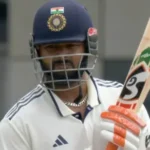India’s Football Journey: From Qualifiers to the Asian Cup
Okay, so picture this: I’m standing in the stands, the Dhaka Stadium absolutely *buzzing*. Not a quiet, polite buzz, but the kind that vibrates through your chest, the kind you get when a nation’s hopes are riding on every single pass, tackle, and shot. And honestly, that’s what covering India’s recent run in the AFC Asian Cup Qualifiers felt like – a front-row seat to something special happening. I’ve been following Indian football for over twenty years, since the days when just *qualifying* for the Asian Cup felt like winning the World Cup. I’ve traveled with the team, interviewed players (some of the biggest names, and some up-and-comers you’ll be hearing a lot about soon), and spent countless hours analyzing games. It’s a passion, plain and simple, and these past few qualifiers… they’ve been different. This isn’t the same Indian team I grew up watching.
For a long time, ‘The Blue Tigers’, as they’re affectionately known, were defined by potential. Loads and loads of potential. We had talented players, absolutely, but something was always missing – a consistent edge, a rock-solid defense, the ability to grind out results even when they weren’t playing their best. Now? They’re showing all those pieces are clicking into place. It’s not about flashy, world-beating football every single time (though they *are* capable of that), it’s about resilience, about tactical awareness, and a steely determination that’s honestly been a real treat to witness.
That journey, though, really started with those qualifiers, and it wasn’t always smooth sailing. I remember being in Hong Kong for the first match, and the atmosphere around the Kowloon and Kai Tak Stadium was…well, subdued. Hong Kong, while having a passionate local fanbase, wasn’t exactly overflowing with excitement about facing India. Maybe that was a bit of a miscalculation on their part. There’s a burgeoning football scene there – a blend of tradition stemming from its British colonial past, and a newly found modernity influenced by the wider Asian game. The stadium itself is iconic, steeped in history, but it’s also a bit…worn. It lacks the modern gloss of some of the newer stadiums popping up across Asia, but it has character – *loads* of it. You feel the echoes of past games, past struggles, and past triumphs within those walls. And on that day, it felt like India was determined to add another triumph to the stadium’s story.
The game itself was a bit of a cagey affair, typical of a qualifying match. Both teams were feeling each other out, not wanting to make any early mistakes. India’s defense, which has become a real strength, was particularly impressive. We’re talking about a core built around players who understand each other’s movements implicitly, who are willing to throw their bodies on the line, and who communicate constantly. They weren’t giving Hong Kong an inch. But a 1-0 victory doesn’t tell the whole story; it was a hard-fought win, and it set the tone for the rest of the campaign. It wasn’t spectacular, but it was *effective*. It showed me, and a lot of other observers, that this Indian team had a different kind of grit.
That result was significant, but it was the next match, against Afghanistan, that really started to get people talking. It was played in Kolkata, and the Salt Lake Stadium was *packed*. The noise was deafening. It was one of those games where the crowd really felt like a twelfth man. Again, the defense was solid, but we started to see more of the attacking flair that this team possesses. Players like Sunil Chhetri, still going strong despite his age, were orchestrating attacks, creating chances, and generally being a nightmare for the Afghan defenders. I’ve watched Chhetri play for years, and honestly, his dedication and leadership are just phenomenal. He’s a legend, no question, but he’s also a remarkably humble and down-to-earth guy. He sets the standard for the rest of the team, both on and off the pitch.
However, the real drama unfolded in the game against Bangladesh in Dhaka. Let me tell you, Dhaka’s football stadium is…an experience. It’s a cauldron of noise, passion, and, frankly, chaos. The atmosphere is electric, bordering on intimidating, and the Bangladeshi fans are incredibly vocal. It’s a fantastic place to watch a game, if you can handle the intensity. The game itself was a proper battle. Bangladesh were fighting for their lives, knowing that a win would keep their qualifying hopes alive. India, already in a strong position, were looking to secure their place in the Asian Cup.
The first half was a tense, back-and-forth affair, with both teams creating chances but failing to find the back of the net. The Bangladeshi defense was particularly stubborn, making life difficult for the Indian attackers. But then, in the second half, the moment came. A clumsy challenge in the box, and the referee pointed to the spot. Penalty to India. Up stepped Stefan Pereira.
Now, penalties are always a nerve-wracking moment, aren’t they? It’s just you, the goalkeeper, and the weight of a nation’s expectations. I’ve seen so many penalties missed, so many dreams shattered, in crucial moments like these. I could feel the tension in the stadium – you could have cut it with a knife. Pereira took a deep breath, looked at the keeper, and struck the ball. A beautiful, perfectly placed shot into the back of the net. Goal! The stadium erupted. The Indian fans went wild.
But here’s where things got *interesting*. The Bangladeshis protested vehemently, claiming that there was a foul on their player in the build-up to the penalty. The referee consulted with his linesman, and after what felt like an eternity, he…disallowed the goal! The decision was controversial, to say the least. It looked like a perfectly good penalty to me, and I heard a lot of other people in the press box agreeing. But the referee had made his mind up.
The game continued, and Bangladesh, buoyed by the disallowed goal, started to push forward. They created a few dangerous chances, and for a moment, it looked like India might crumble under the pressure. But they didn’t. They dug deep, defended resolutely, and held on for a 0-0 draw.
It wasn’t the result they wanted, but it was a valuable point nonetheless. More importantly, it showed me that this Indian team had the mental fortitude to handle adversity. They didn’t let the controversial decision get to them. They kept their heads, stayed focused, and fought to the very end. That, to me, was a sign of real progress. Honestly, that’s what separates good teams from great teams – the ability to respond to setbacks with courage and determination.
The whole experience really drove home the importance of points in Group C (and in any Asian Cup qualifier, really). It isn’t about dominating every game; it’s about grinding out results, picking up points even when you’re not at your best, and being clinical when you get your chances. The Asian Cup qualification process is brutal. It’s a long, grueling campaign, and every point counts. It’s a constant test of nerve, stamina, and tactical flexibility. You’re playing in different conditions, against different opponents, and in front of different crowds. You need to be adaptable, resilient, and mentally strong.
I’ve covered a lot of these qualifying campaigns over the years, and I can tell you firsthand that the atmosphere is often tense and unpredictable. There are moments of brilliance, moments of frustration, and moments of sheer drama. But one thing that always stands out is the passion of the fans. The support for their national teams is unwavering, and it’s a privilege to be there to witness it.
Coming back to the Indian team itself, a lot of the success comes down to coach Igor Štimac. He’s been a breath of fresh air since he took over. He’s instilled a sense of belief in the players, and he’s not afraid to experiment with different tactics and formations. He’s also been very vocal about the need to improve the infrastructure and development of football in India, which is something I wholeheartedly agree with.
He’s created a squad that’s not just about individual talent, but about a cohesive unit. He’s emphasized the importance of teamwork, discipline, and a strong work ethic. And it’s paying dividends. I’ve spoken to several players off the record who’ve told me how much they appreciate his honesty and his directness. He tells it like it is, and he doesn’t shy away from making tough decisions. He’s also given a lot of opportunities to younger players, which is crucial for the long-term future of Indian football.
The defense has been the cornerstone of their success. Players like Sandesh Jhingan, a veteran with a wealth of experience, are the bedrock of that defensive line. He’s a commanding presence in the air, a strong tackler, and a natural leader. Alongside him, younger players like Anwar Ali have been forming a formidable partnership. Anwar, despite facing some challenges earlier in his career, has come back stronger and is now one of the most promising defenders in the country.
But it’s not just about the defense. The midfield is also playing a crucial role, with players like Brandon Fernandes and Jeakson Singh providing creativity and energy. And, of course, there’s Sunil Chhetri, still the talisman of the team. His ability to score goals, his work rate, and his leadership are still invaluable. He’s a true legend of Indian football, and he’s inspiring a new generation of players.
Beyond the immediate success of the qualifying campaign, what’s really exciting is the future of Indian football. There’s a growing pool of talented young players coming through the ranks, and the Indian Super League (ISL) is providing them with a platform to showcase their skills. The ISL has definitely raised the standard of football in India, attracting better players and coaches, and improving the overall quality of the game. It’s not perfect, of course, but it’s a significant step in the right direction.
I’ve had the chance to chat with some of these young players, and they are incredibly ambitious and determined. They want to play at the highest level, and they believe that India can compete with the best teams in Asia. That kind of belief is contagious, and it’s something that’s filtering down through the entire footballing ecosystem.
However, there are still challenges. Developing a strong grassroots program is essential – we need to identify and nurture young talent at a very early age. Improving the infrastructure – building more quality stadiums and training facilities – is also crucial. And, of course, we need to continue to invest in coaching education.
And it’s not just about on-field development. The commercial side of Indian football needs to grow as well. Attracting more sponsors, increasing television viewership, and building a stronger fan base are all important factors. The recent success of the national team has definitely helped to generate more interest in the sport, but there’s still a long way to go.
Getting to the Asian Cup itself is massive, of course. It’s a chance to test ourselves against the best teams in Asia, to gain valuable experience, and to inspire a nation. But it’s also a chance to show the world that Indian football is on the rise. The Asian Cup isn’t just a tournament; it’s a platform to showcase our talent, to build our brand, and to attract investment.
The draw for the group stage will be crucial, and India will need to prepare meticulously for every game. They’ll need to be at their absolute best if they want to make it out of the group and into the knockout stages. But I believe they have the potential to do so. They have a talented squad, a determined coach, and a passionate fan base.
Looking back on the qualifiers, I’m struck by how far Indian football has come. It wasn’t just about winning games; it was about building a team, developing a culture, and inspiring a nation. It was about showing that India can compete with the best in Asia. I’ve been following this team for a long time, and I’ve never been more optimistic about the future.
I remember days watching sparsely populated stadiums, reading articles questioning the viability of professional football in India, and generally feeling a sense of disappointment every time the national team took the field. Now? There’s a buzz. There’s a genuine excitement. People are talking about Indian football, and they’re talking about it in a positive way.
That shift in perception is huge. It’s a testament to the hard work of the players, the coach, and everyone involved in Indian football. It’s also a testament to the unwavering support of the fans. This journey, from the qualifiers to the Asian Cup, is a story of hope, resilience, and determination. And I, for one, can’t wait to see what happens next.
The beauty of football, especially at the international level, is that it’s unpredictable. Anything can happen on any given day. But one thing is certain: India is ready to compete. They’ve earned their place at the Asian Cup, and they’re determined to make their mark. I’ll be there, in the stands (or reporting from the press box), watching every game, and cheering them on. And I hope you will too. This isn’t just a team; it’s a symbol of a nation’s growing ambition and a testament to the power of dreams. And it’s a truly exciting time to be an Indian football fan. It really is.
Anurag Dhole is a seasoned journalist and content writer with a passion for delivering timely, accurate, and engaging stories. With over 8 years of experience in digital media, she covers a wide range of topics—from breaking news and politics to business insights and cultural trends. Jane's writing style blends clarity with depth, aiming to inform and inspire readers in a fast-paced media landscape. When she’s not chasing stories, she’s likely reading investigative features or exploring local cafés for her next writing spot.






